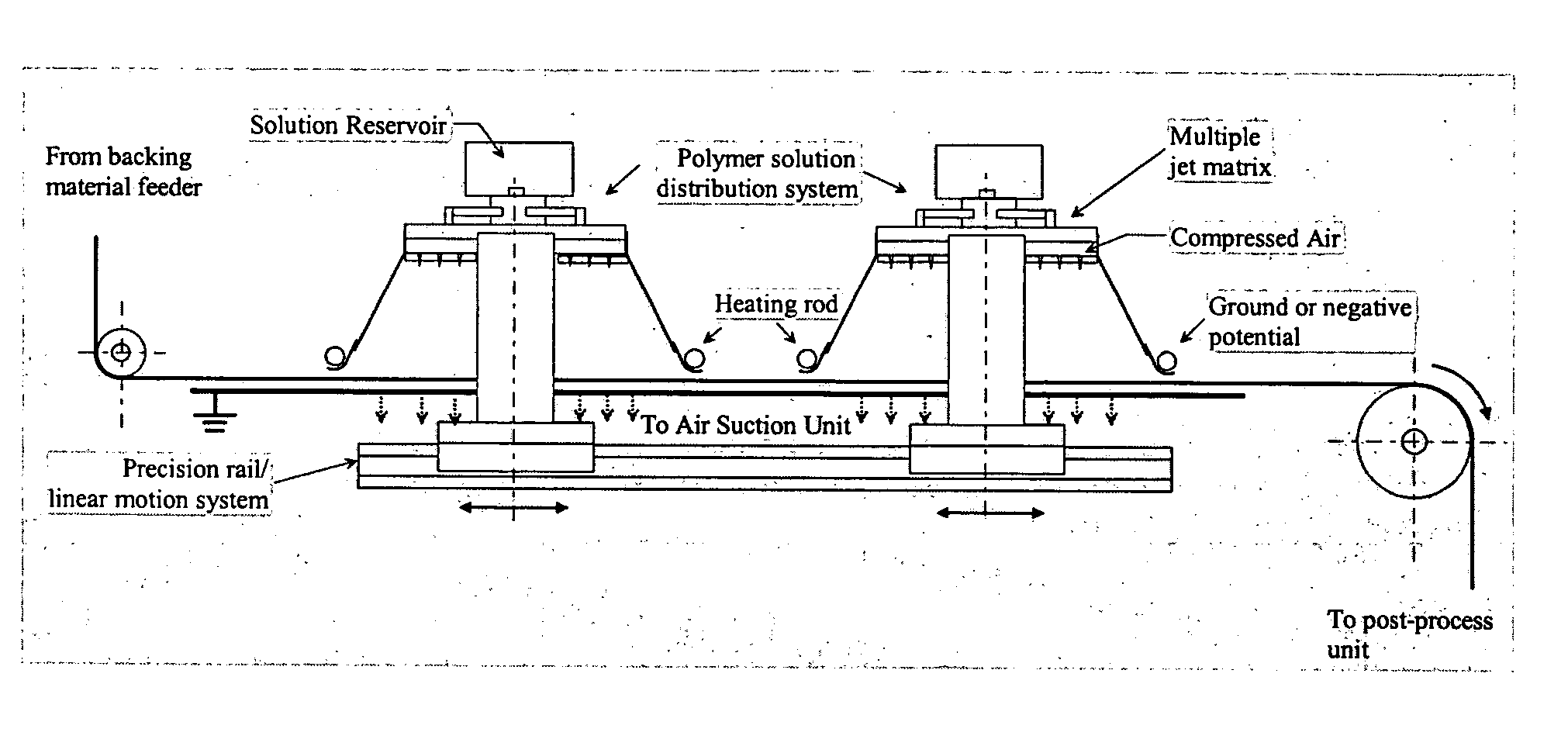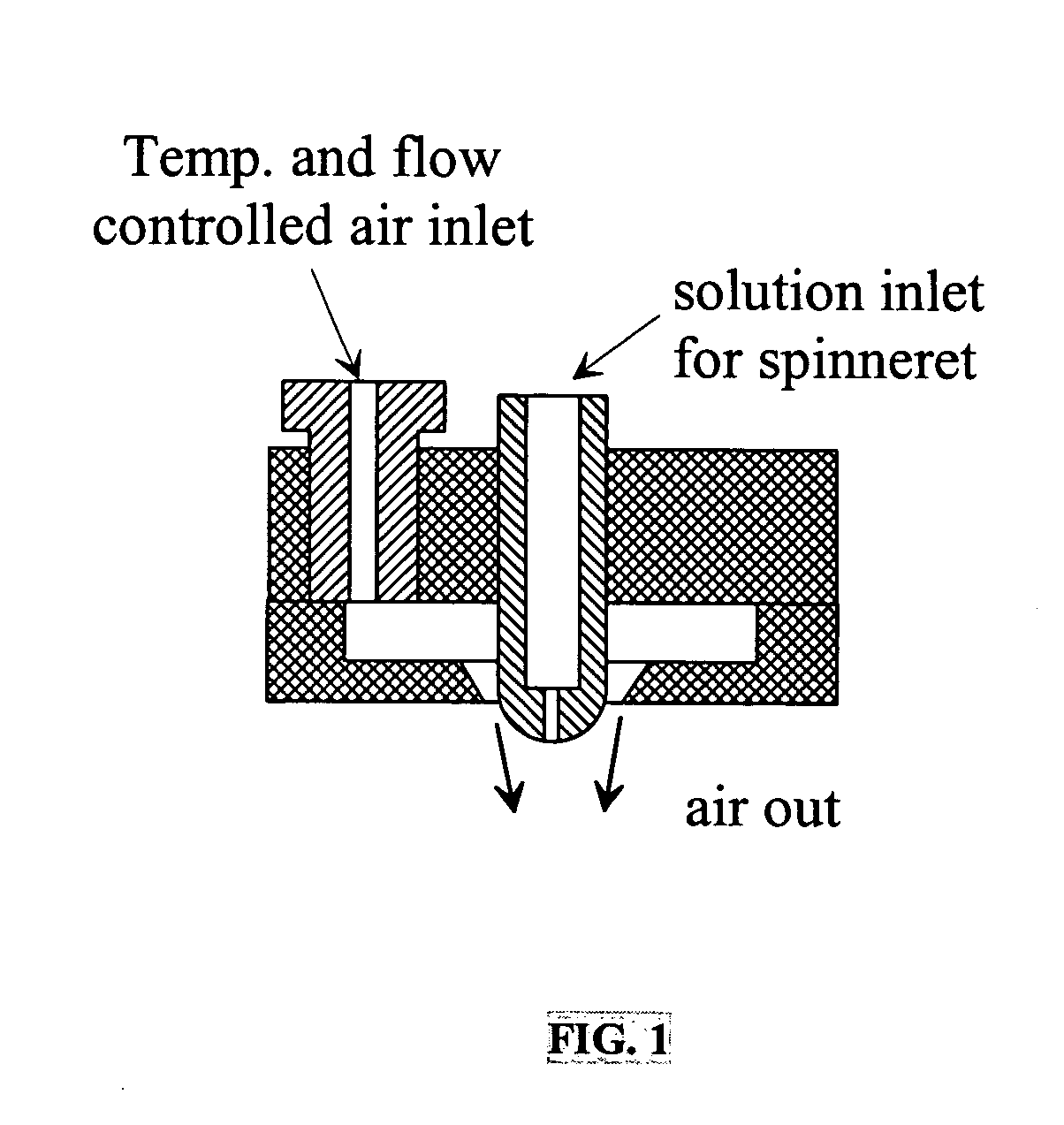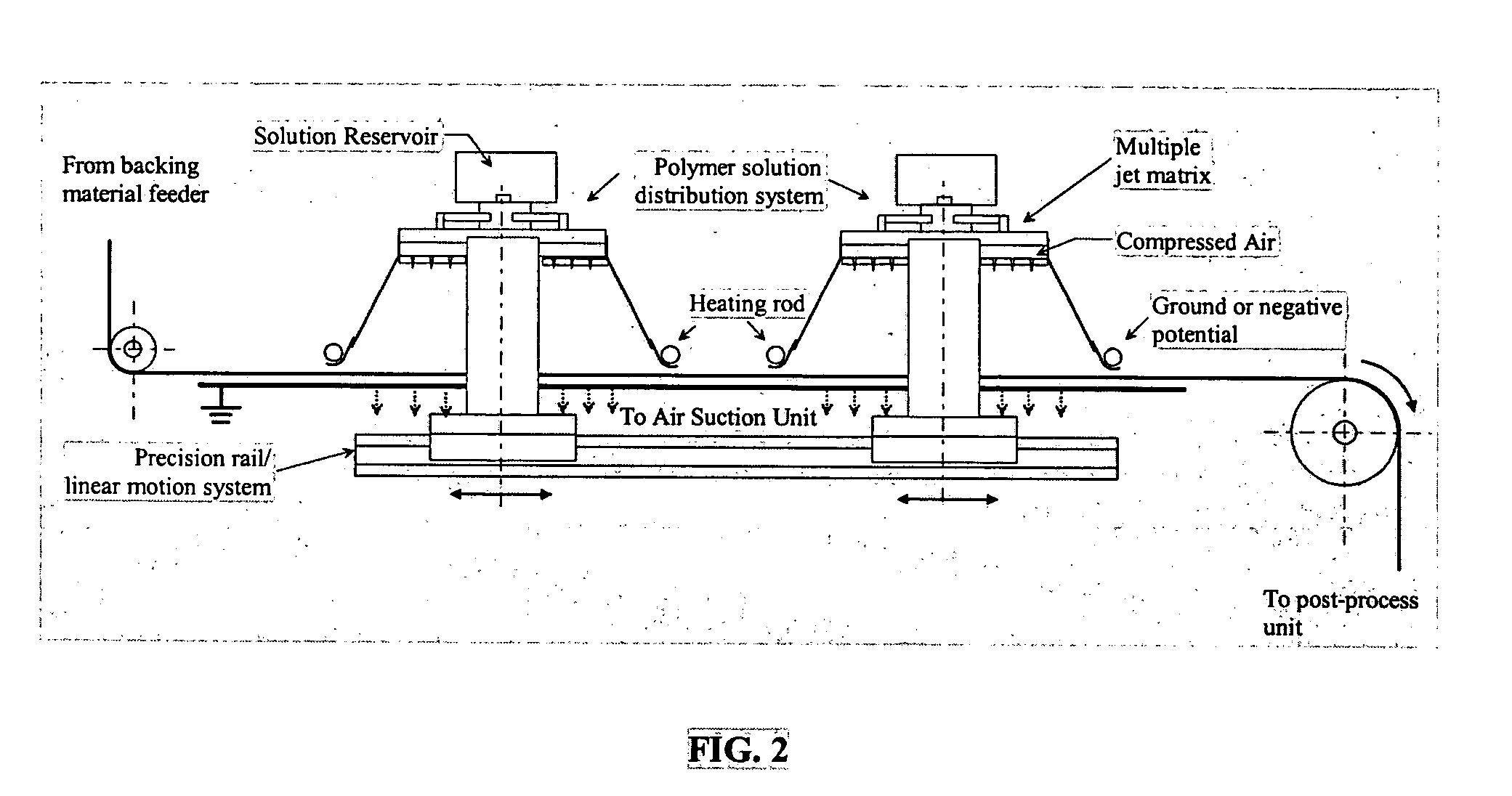Electro-blowing technology for fabrication of fibrous articles and its applications of hyaluronan
a technology of electro-blowing and fibrous articles, applied in the direction of melting spinning methods, filament/thread forming, staple fibre formation, etc., can solve the problems of high production cost, unstable liquid droplets, and low yield of electro-spinning process
- Summary
- Abstract
- Description
- Claims
- Application Information
AI Technical Summary
Benefits of technology
Problems solved by technology
Method used
Image
Examples
examples
Having generally described this invention, a further understanding can be obtained by reference to certain specific examples which are provided herein for purposes of illustration only and are not intended to be limiting unless otherwise specified.
The following conditions were used for the electro-blowing of HA, unless otherwise specified. 1. HA concentration: 2.5% (w / v) HA-C in acidic aqueous solution (MW: 3.5 million) 2. Feeding rate: 40 μl / min 3. Electric field: 40 kV
4. Distance between electrodes: 9.5 cm.
TABLE 1HA Sample IdentificationsContent ofHANaClViscositysamplePreparation methodMolecular weight(wt %)(Pa · s at 1 s−1)HA-CSupplied from Denka3,500,0000 21 (0.7%)HA-BSupplied from Denka200,0001.6 27 (10%)HA-ASupplied from Denka45,0002.1 13 (25%)HA-5Ultrasonicated for 5 minUnknown0 16 (3%)Detailed preparation method3.3 (2%)is provided as shown belowHA-10Ultrasonicated for 10 minUnknown02.0 (4%)HA-15Ultrasonicated for 15 minUnknown03.2 (6%)
Preparation of HA samples wit...
PUM
| Property | Measurement | Unit |
|---|---|---|
| temperature | aaaaa | aaaaa |
| temperature | aaaaa | aaaaa |
| temperature | aaaaa | aaaaa |
Abstract
Description
Claims
Application Information
 Login to View More
Login to View More - R&D
- Intellectual Property
- Life Sciences
- Materials
- Tech Scout
- Unparalleled Data Quality
- Higher Quality Content
- 60% Fewer Hallucinations
Browse by: Latest US Patents, China's latest patents, Technical Efficacy Thesaurus, Application Domain, Technology Topic, Popular Technical Reports.
© 2025 PatSnap. All rights reserved.Legal|Privacy policy|Modern Slavery Act Transparency Statement|Sitemap|About US| Contact US: help@patsnap.com



